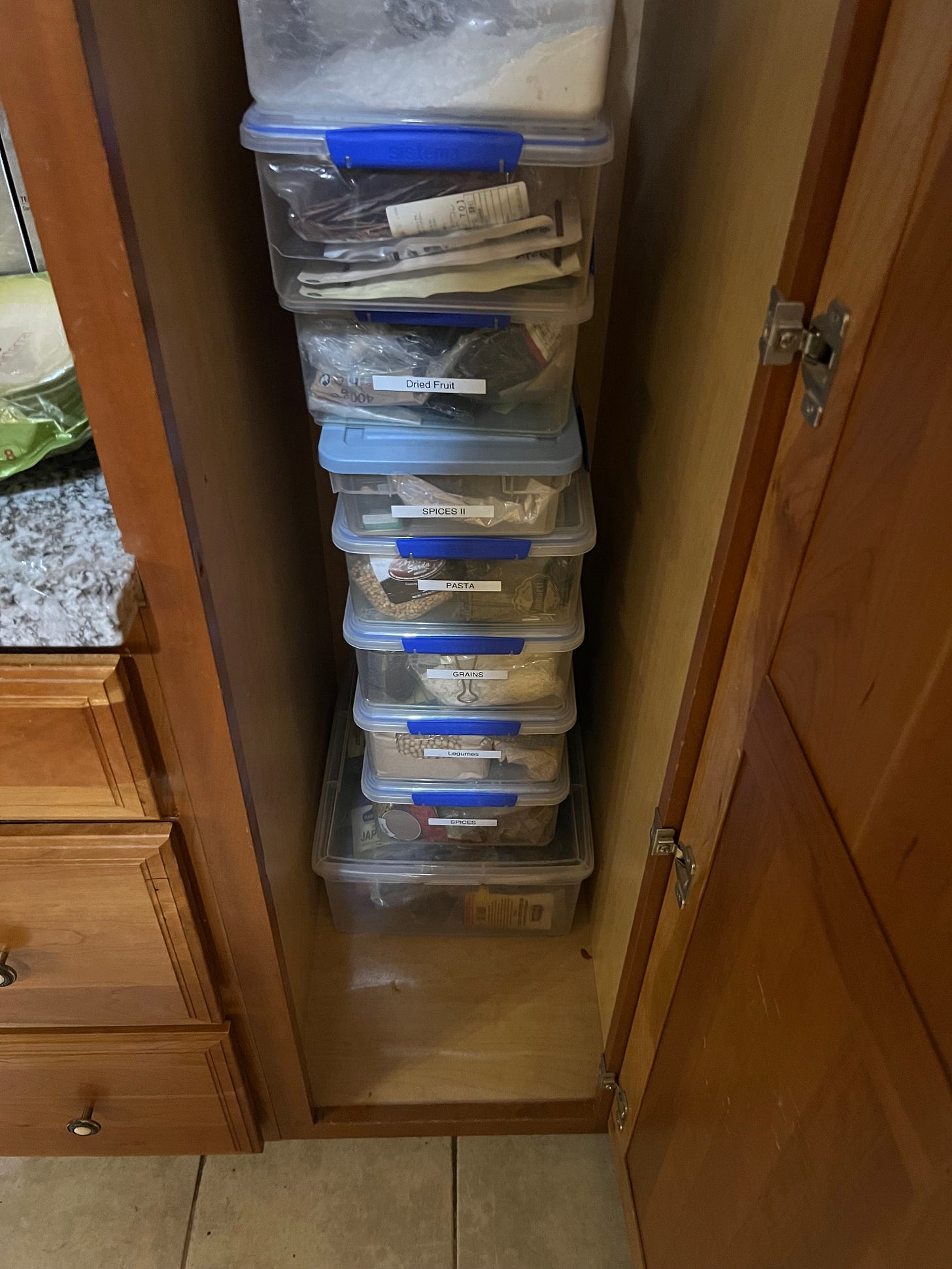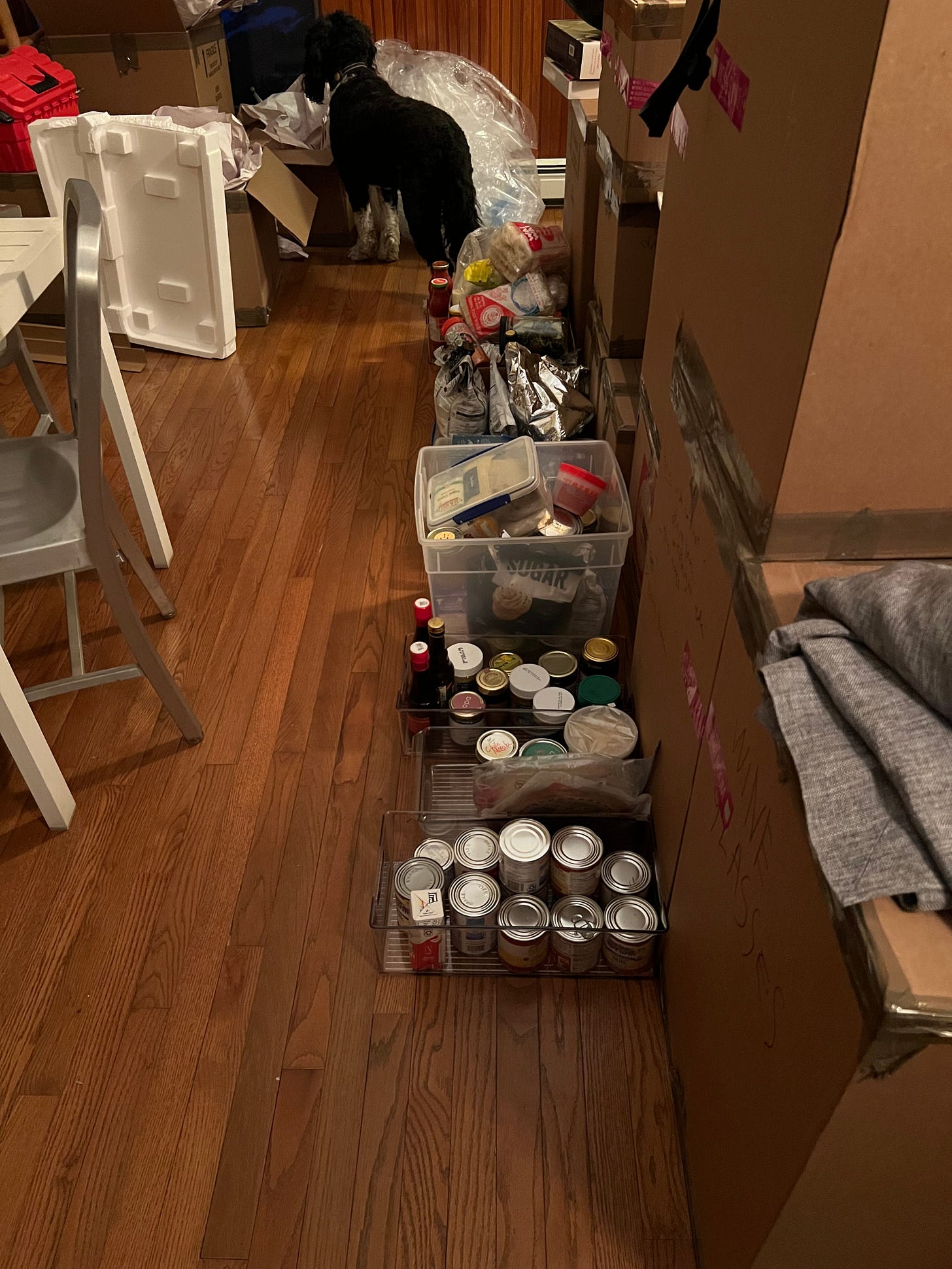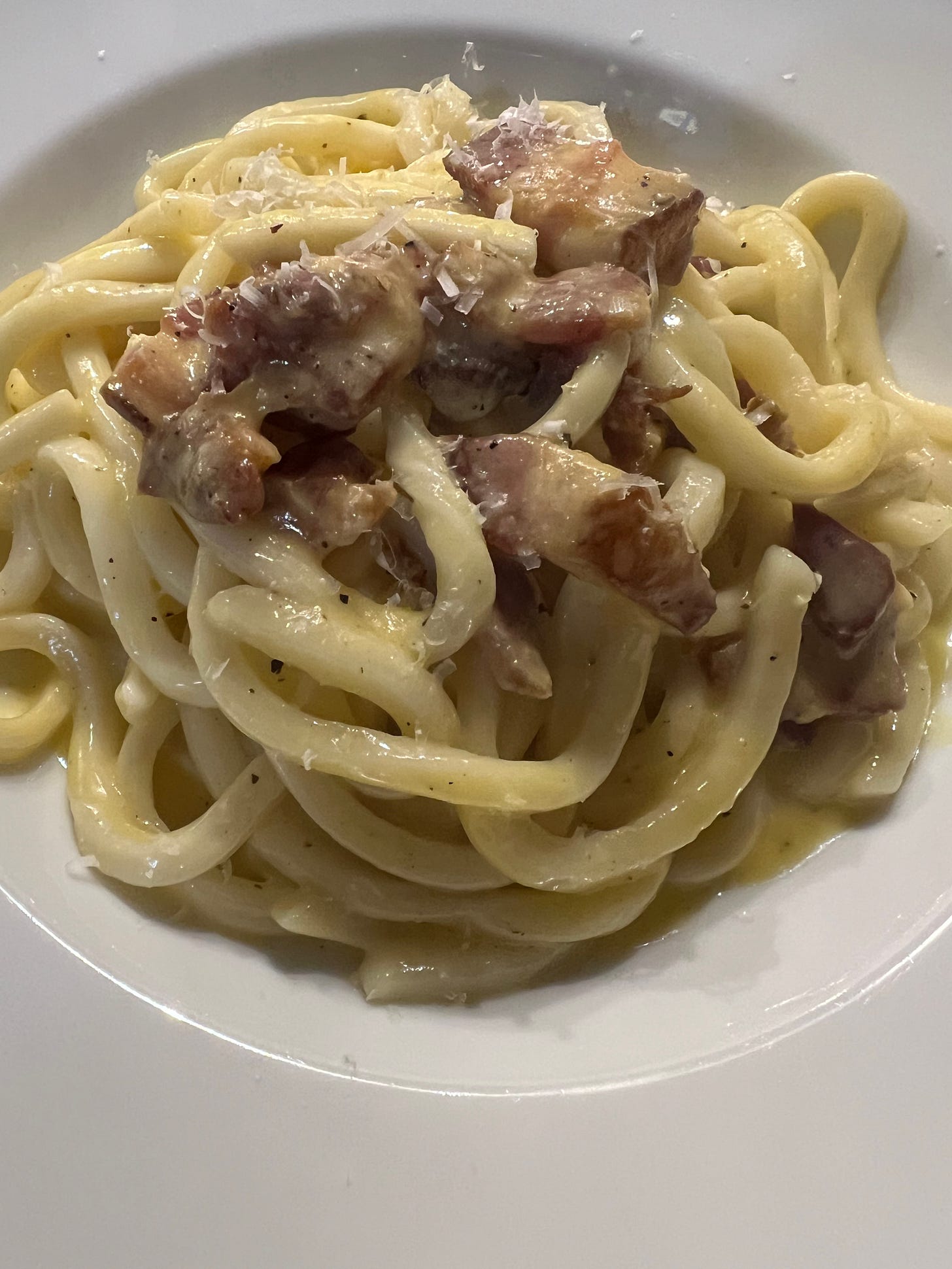Well, we live in New Hampshire now. Plainfield, to be exact. In a beautiful house on six wooded acres that is currently a mess of boxes and newsprint and paint. While Nate’s been working on the living areas, I’ve spent days unpacking the kitchen, trying to find places for all the dishes and appliances and baking pans and little bottles I just couldn’t throw out. (I’m reconsidering that decision.) I’ve left the food for last. There is so much food.
Looking at the boxes and boxes of food and spices and oils and vinegars and tomatoes and Asian noodles and everything else before me, I realize what many of you have already guessed, that my pantry is not normal. I can’t believe what I’ve got here. Going through it all is like flipping through the pages of a photo album of my travels, though admittedly the only places I seem to visit are grocery stores.
I remember the excitement I felt in Denmark when I found this bottle of blackening (deeply caramelized sugar) to darken my Danish rye bread. I recall the shop in Tokyo where I was able to choose the ratio of the seven fundamental spices to make my own sichimi togarshi and the one in Kyoto that specialized in these roasted sesame seeds. Of course, I’ve got Korean and Indian ingredients aplenty because those trips were so recent.

Now that most of the dishes and pans are put away, there’s not much space left for food in the kitchen. I’ve ordered some extra shelves to expand the capacity of the cabinets. One day we will hope to redo this lair, reconfiguring the cabinets and building a separate pantry. But for now, I’ll make do. In the meantime, where will I put these five bottles of pomegranate molasses?
One thing we have a surfeit of is refrigeration. I can count seven refrigerated devices divided between the main house and our guest house, which also sports a commercial kitchen. And that doesn’t include the kegorator and four ice machines, which are sprinkled throughout the place. This gives me plenty of space to chill my whole grains and flours, cheeses and charcuterie, pickles and international condiments. Thanksgiving prep will be a breeze if I can remember where I put everything.
For now, my approach to the pantry items is to categorize things, putting like with like so that I can hope to find something once I put it all away out of sight. I think of it as my “Chewy Decimal System.” Some of the categories I’ve got so far are tomato products, chocolate, Asian ingredients, milk products (why do I have so many cans of condensed and evaporated milk?!), flours and grains, legumes, jams, sugars and sweet things (including honeys), and teas. I have many more boxes to unpack.
Meanwhile, there are meals to be made.
We’ve moved to a place totally lacking in food delivery—not that I ever ordered food in Manhattan, for that matter. For our first dinner in the new place I made the ultimate pantry comfort food, pasta alla carbonara, which requires just a couple of ingredients. I hadn’t found my dry pastas yet, so I boiled some frozen udon—one of my favorite noodles because they are plump, chewy and cook in a couple of minutes. It was a very good start to our next chapter..
Like many Italian dishes, pasta alla carbonara is simple, but difficult to get right. Of the few ingredients, the egg yolks are trickiest. Too much heat and they scramble. I deploy a technique for the sauce I learned in Rome, where the dish originates, using nothing more than the boiling pasta water to cook it, melting the cheese and warming the egg yolks just to the point that they cling to the noodles. Purists will only allow guanciale, the cured (not smoked) jowl of pig, but pancetta and bacon make a yummy carbonara, too. I prefer a combination of freshly grated Pecorino Romano and Parmigiano Reggiano, but either one will work alone. Those same purists will tell you that neither cream nor butter should ever be added to a true carbonara, which would go against the cucina povera nature of the dish. On this, I have to agree, as the added richness isn’t necessary if you get the technique right. One thing I’ll note because I often forget, is that even with all that bacon and cheese and salted pasta water, the sauce still really needs an additional pinch of salt.
RECIPE: Moving Day Carbonara
Serves 2
2 packs (500 g) frozen udon or 250g (about 8 ounces) dry pasta, such as spaghetti or linguine
3 ounces guanciale, pancetta, or bacon, sliced into 3/4-inch strips like lardons
2 egg yolks
About 2 ounces finely grated Parmigiano Reggiano and/or Pecorino Romano
Salt and freshly ground black pepper
Bring a large pot of generously salted water to a boil. While it is heating, place a frying pan over medium-high heat. Add the guanciale, pancetta, or bacon to the pan and fry, turning frequently, until the fat has rendered and the meat has crisped. Don’t let it burn. Cool.
In a large mixing bowl, combine the egg yolks, grated cheese, pinch of salt, a few grinds of black pepper, and the browned pork bits with all the rendered fat (use a rubber spatula to scrape the pan). Stir to combine. You’ll have a sort of chunky paste.
Once the salted water boils, add the noodles, and cook just until al dente, a couple of minutes for the frozen udon, longer for the dry pasta. When the pasta has just a minute or two left, add one or two ladles of the pasta cooking water to the mixing bowl while stirring constantly with a whisk until the cheese melts and the egg yolks thicken. The paste will loosen up. Add more of the hot cooking water, a few tablespoons at a time, beating until you have a thick, rich sauce.
Once the. noodles are done, drain them well (do not rinse) and add them hot to the bowl with the sauce. Toss well to coat. Let sit a minute or two for the noodles to absorb some of the liquid. Toss again and serve garnished with more grated cheese and freshly ground black pepper. Eat immediately!









And we can't wait to welcome you!
Mitchell! We call dishes like this "storm pasta," in lieu of "storm soup," which tends to lack bacon and therefore isn't as joyful. Good luck with moving in and welcome to life in the wilderness!